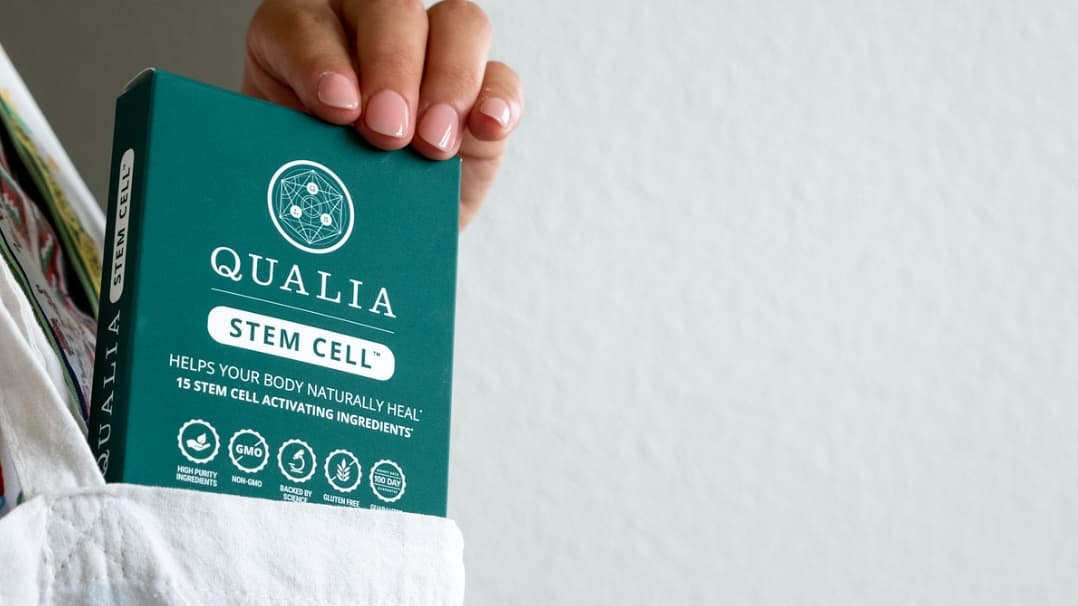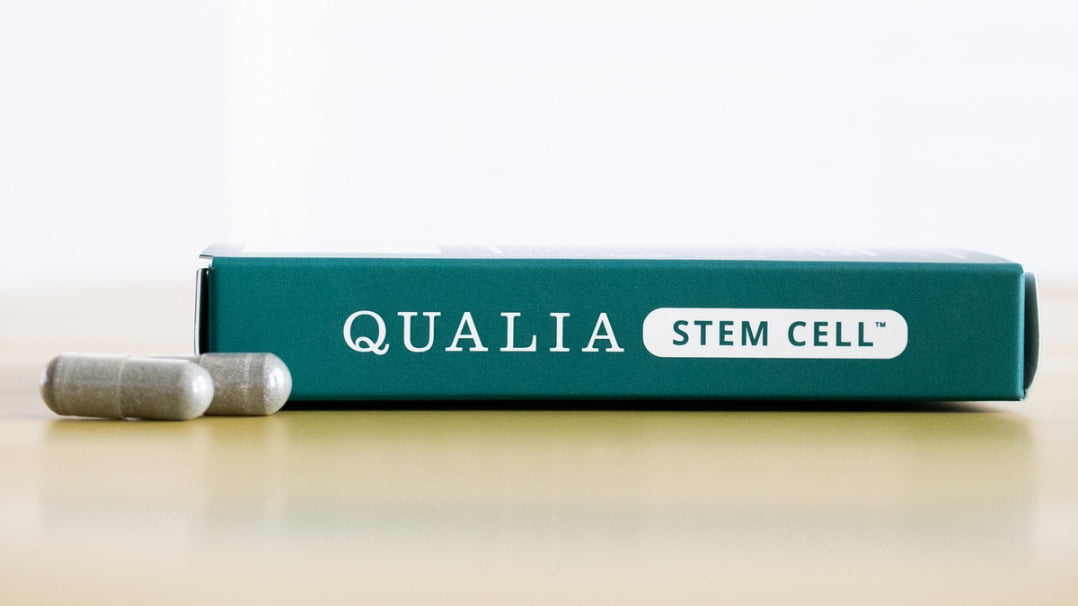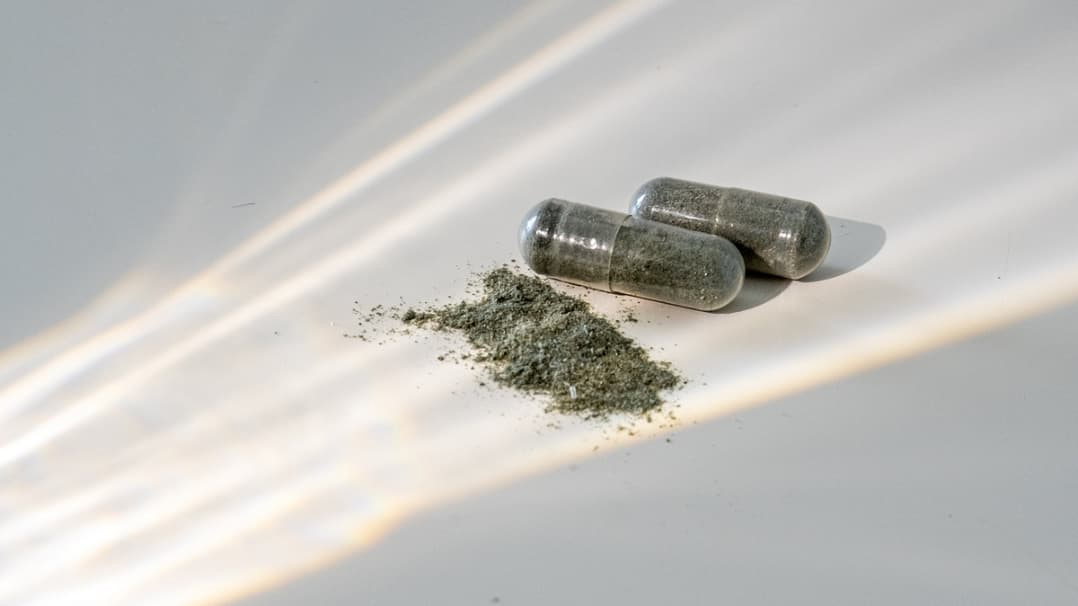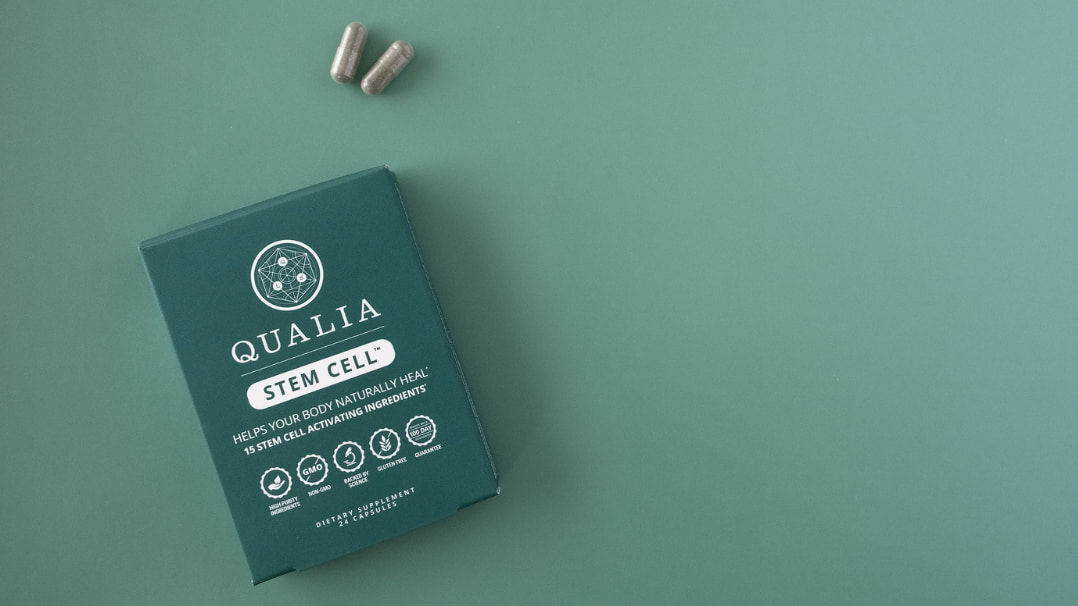Magnesium Glycinate

Magnesium glycinate is a chelated form of the mineral magnesium. It is made from one magnesium bound to two glycines. Both are involved in supporting efficient cellular function. Magnesium is one of the most abundant minerals in the body and is vital for the functioning of all living cells. It’s used in more than 300 enzymes. ATP (i.e., cellular energy) occurs complexed with ATP, so all enzymes utilizing ATP require magnesium. The same is true for enzymes that synthesize DNA and RNA, magnesium is always involved. Magnesium also plays a large role in breaking down sugars (glycolysis). Because magnesium supports the electrical functions of cells (i.e., it’s an electrolyte), muscle and nerve function rely on magnesium. Glycine was discovered in the early 1800s. Its name comes from the Greek word for sweet, because glycine has a sweet taste similar to sugar. Glycine is a conditional amino acid. While we can make glycine inside the body (i.e., it’s non-essential), there are circumstances where the amount we make and what we get in the diet appear to be insufficient to optimize functional health. Glycine is used to make many proteins in the body. An example is glutathione, which functions as part of cellular antioxidant defenses and detoxification. Glycine is also used in the brain as a neurotransmitter and throughout the body to make collagen. Collagen proteins are the best dietary source of glycine.*
TOP BENEFITS OF MAGNESIUM GLYCINATE
Supports sleep*
Supports mood*
Supports musculoskeletal health*
Supports cellular health*
QUALIA’S MAGNESIUM GLYCINATE SOURCING
Magnesium glycinate is used when there’s a role for both magnesium and glycine in the formula. For example, both support healthy cellular energy function. Magnesium is involved in making and using ATP and glycine supports building the antioxidant molecule glutathione, so boosts antioxidant defenses. Both also support evening physiology, including aspects of one or both of melatonin and GABA signaling. Magnesium glycinate has higher bioavailability than other more traditional forms of magnesium supplementation because the two glycines act as a carrier and allow for efficient absorption [1].
Magnesium glycinate is non-GMO and Vegan.
MAGNESIUM GLYCINATE FORMULATING PRINCIPLES AND RATIONALE
The Recommended Dietary Allowances for magnesium in adults varies from 310 to 420 depending upon age and gender. A majority of Americans of all ages fall somewhat short of this amount. Supplying even a low dose of magnesium can help close the gap. Magnesium glycinate contains about 14% elemental magnesium by mass (the other 86% is glycine), so the complex provides far more glycine than magnesium. An average adult requires about 15 grams of glycine daily. About 2-3 grams are made in the body; diet must provide the rest [2]. Magnesium glycinate is generally considered to be dose-dependent (see Qualia Dosing Principles) in the range it’s commonly dosed. We generally dose it in small amounts to augment dietary intake of both magnesium and glycine. The amount chosen to be included also considers capsule count, since each additional ~90 mg of elemental magnesium supplied as magnesium glycinate requires an additional capsule.*
MAGNESIUM KEY MECHANISMS
Supports metabolism and energy generation*
Required for the synthesis of ATP by ATP synthase in mitochondria* [3,4]
Forms a complex with ATP (MgATP) that is required for many rate-limiting metabolic enzymes* [5]
Cofactor for rate-limiting enzymes involved in carbohydrate and lipid metabolism* [5,6]
Cofactor for rate-limiting enzymes involved protein and nucleic acid synthesis* [5,6]
Supports cell signaling*
Supports cellular sodium and potassium influx and efflux* [5]
Modulates calcium entry into cells so supports balanced calcium signaling* [5,6]
Cofactor for protein phosphorylation (enzyme activation)* [5,6]
Cofactor for the activity of adenylate cyclase - cyclic adenosine monophosphate (cAMP) synthesis* [7]
Supports cell structure*
Stabilizes proteins, nucleic acids, chromosomes, and biological membranes* [5]
Supports healthy cardiovascular function*
Supports cardiac muscle contraction and heart rhythm* [6,8]
Supports vascular tone* [6,8]
Supports platelet function* [6,9]
Supports brain function*
Supports normal hearing* [10–16]
Supports normal neurotransmitter release and healthy neurological function* [6]
Supports the activity of the glutamate N-methyl-D-aspartate (NMDA) receptor* [17,18]
Supports glutamate dehydrogenase (GDH) enzyme - converts glutamate to α-ketoglutarate, and vice versa* [19,20]
Supports serotonin N-acetyltransferase - an enzyme that is involved in the day/night rhythmic production of melatonin from serotonin* [21,22]
Supports brain-derived neurotrophic factor (BDNF)* [18,23,24]
Supports a healthy mood*
Supports mental well-being* [25,26]
Supports healthy behavioral and physiological responses to stress* [24,27–30]
Supports sleep*
Supports sleep quality* [31–38]
Supports healthy EEG and neuroendocrine responses during sleep* [39,40]
Supports exercise tolerance if sleep is insufficient* [41]
Supports musculoskeletal health*
Required for muscle contraction* [6,42]
Supports muscle strength* [43,44]
Supports bone metabolism/remodeling by calcium absorption* [5]
Supports calcitonin and parathyroid hormone activity* [5]
Supports bone formation* [5]
Supports a healthy gut microbiota*
Supports a healthy composition of the gut microbiota* [45–47]
Complementary ingredients*
Commonly supplemented with calcium for bone support*
Supports vitamin D metabolism* [48]
B-complex vitamins and melatonin supplementation for sleep support* [49]
Zinc and melatonin supplementation for sleep support* [50]
Vitamin B6 for mood support* [51,52]
Hawthorn and California poppy for mood support* [53]
Antioxidant vitamins for hearing support* [54–56]
GLYCINE KEY MECHANISMS
Structure and Function Roles*
Plays an essential role in protein synthesis, especially collagen synthesis* [57]
Provides flexibility to active sites in many enzymes* [58]
Supports cell membrane function to promote balanced immune responses* [59]
Protein Precursor*
Precursor for synthesis of glutathione* [60–62]
Precursor for synthesis of creatine* [63]
Precursor for synthesis of porphyrins and heme* [64]
Precursor for synthesis of purines* [65]
Supports brain and nervous system function*
Acts as a neurotransmitter (i.e., has its own neurotransmission system)* [66–69]
Supports healthy glutaminergic neurotransmission* [70]
Supports serotonergic neurotransmission* [71]
Supports sleep*
Supports sleep quality* [72,73]
Reduces daytime sleepiness and fatigue; improves vigilance* [72–74]
Promotes healthy aging and longevity*
Supports metabolism of glycation end products (i.e., sugar-protein cross links)* [75–78]
Supports growth hormone secretion* [79]
Complementary ingredients*
N-Acetyl-Cysteine (NAC) for glutathione synthesis* [80–82]
*These statements have not been evaluated by the Food and Drug Administration. This product is not intended to diagnose, treat, cure, or prevent any disease.
REFERENCES
[1]S.A. Schuette, B.A. Lashner, M. Janghorbani, JPEN J. Parenter. Enteral Nutr. 18 (1994) 430–435.
[2]E. Meléndez-Hevia, P. De Paz-Lugo, A. Cornish-Bowden, M.L. Cárdenas, J. Biosci. 34 (2009) 853–872.
[3]Y.H. Ko, S. Hong, P.L. Pedersen, J. Biol. Chem. 274 (1999) 28853–28856.
[4]A.U. Igamberdiev, L.A. Kleczkowski, Front. Plant Sci. 6 (2015) 10.
[5]S.-M. Glasdam, S. Glasdam, G.H. Peters, Adv. Clin. Chem. 73 (2016) 169–193.
[6]W. Jahnen-Dechent, M. Ketteler, Clin. Kidney J. 5 (2012) i3–i14.
[7]S.Y. Cech, W.C. Broaddus, M.E. Maguire, Mol. Cell. Biochem. 33 (1980) 67–92.
[8]B.M. Altura, B.T. Altura, Magnesium 4 (1985) 226–244.
[9]M. Shechter, C.N. Merz, M. Paul-Labrador, S.R. Meisel, R.K. Rude, M.D. Molloy, J.H. Dwyer, P.K. Shah, S. Kaul, Am. J. Cardiol. 84 (1999) 152–156.
[10]Z. Joachims, A. Netzer, H. Ising, E. Rebentisch, J. Attias, G. Weisz, T. Günther, Schriftenr. Ver. Wasser Boden Lufthyg. 88 (1993) 503–516.
[11]J. Attias, G. Weisz, S. Almog, A. Shahar, M. Wiener, Z. Joachims, A. Netzer, H. Ising, E. Rebentisch, T. Guenther, Am. J. Otolaryngol. 15 (1994) 26–32.
[12]F. Scheibe, H. Haupt, B. Mazurek, O. König, Noise Health 3 (2001) 79–84.
[13]A. Gordin, D. Goldenberg, A. Golz, A. Netzer, H.Z. Joachims, Otol. Neurotol. 23 (2002) 447–451.
[14]B.I. Nageris, D. Ulanovski, J. Attias, Ann. Otol. Rhinol. Laryngol. 113 (2004) 672–675.
[15]J. Attias, S. Sapir, I. Bresloff, I. Reshef-Haran, H. Ising, Clin. Otolaryngol. Allied Sci. 29 (2004) 635–641.
[16]M.J. Cevette, D.M. Barrs, A. Patel, K.P. Conroy, S. Sydlowski, B.N. Noble, G.A. Nelson, J. Stepanek, Int. Tinnitus J. 16 (2011) 168–173.
[17]J.P. Ruppersberg, E. v. Kitzing, R. Schoepfer, Seminars in Neuroscience 6 (1994) 87–96.
[18]N. Abumaria, B. Yin, L. Zhang, X.-Y. Li, T. Chen, G. Descalzi, L. Zhao, M. Ahn, L. Luo, C. Ran, M. Zhuo, G. Liu, J. Neurosci. 31 (2011) 14871–14881.
[19]L.A. Fahien, J.K. Teller, M.J. Macdonald, C.M. Fahien, Mol. Pharmacol. 37 (1990) 943–949.
[20]B. Pochwat, G. Nowak, B. Szewczyk, Pharmacol. Rep. 68 (2016) 881–885.
[21]D.J. Morton, M.F. James, J. Pineal Res. 2 (1985) 387–391.
[22]A.J. Billyard, D.L. Eggett, K.B. Franz, Magnes. Res. 19 (2006) 157–161.
[23]B. Pochwat, M. Sowa-Kucma, K. Kotarska, P. Misztak, G. Nowak, B. Szewczyk, Psychopharmacology 232 (2015) 355–367.
[24]J. Petrović, D. Stanić, Z. Bulat, N. Puškaš, M. Labudović-Borović, B. Batinić, D. Mirković, S. Ignjatović, V. Pešić, Horm. Behav. 105 (2018) 1–10.
[25]G.A. Eby, K.L. Eby, Med. Hypotheses 67 (2006) 362–370.
[26]N.B. Boyle, C. Lawton, L. Dye, Nutrients 9 (2017) 429.
[27]E. Poleszak, B. Szewczyk, E. Kedzierska, P. Wlaź, A. Pilc, G. Nowak, Pharmacol. Biochem. Behav. 78 (2004) 7–12.
[28]L. Fromm, D.L. Heath, R. Vink, A.J. Nimmo, J. Am. Coll. Nutr. 23 (2004) 529S–533S.
[29]I.N. Iezhitsa, A.A. Spasov, M.V. Kharitonova, M.S. Kravchenko, Nutr. Neurosci. 14 (2011) 10–24.
[30]E. Poleszak, Pharmacol. Rep. 60 (2008) 483–489.
[31]M. Hornyak, U. Voderholzer, F. Hohagen, M. Berger, D. Riemann, Sleep 21 (1998) 501–505.
[32]M. Hornyak, P. Haas, J. Veit, H. Gann, D. Riemann, Alcohol. Clin. Exp. Res. 28 (2004) 1702–1709.
[33]B. Abbasi, M. Kimiagar, K. Sadeghniiat, M.M. Shirazi, M. Hedayati, B. Rashidkhani, J. Res. Med. Sci. 17 (2012) 1161–1169.
[34]N.R. Maor, M. Alperin, E. Shturman, H. Khairaldeen, M. Friedman, K. Karkabi, U. Milman, JAMA Intern. Med. 177 (2017) 617–623.
[35]S. Poenaru, S. Rouhani, J. Durlach, N. Aymard, F. Belkahla, Y. Rayssiguier, M. Iovino, Magnesium 3 (1984) 145–151.
[36]L. Popoviciu, D. Delast-Popoviciu, R. Delast-Popoviciu, I. Bagathai, G. Bicher, C. Buksa, S. Covaciu, E. Szalay, Rom. J. Neurol. Psychiatry 28 (1990) 19–24.
[37]H. Depoortere, D. Françon, J. Llopis, Neuropsychobiology 27 (1993) 237–245.
[38]D. Chollet, P. Franken, Y. Raffin, J.G. Henrotte, J. Widmer, A. Malafosse, M. Tafti, Behav. Genet. 31 (2001) 413–425.
[39]K. Held, I.A. Antonijevic, H. Künzel, M. Uhr, T.C. Wetter, I.C. Golly, A. Steiger, H. Murck, Pharmacopsychiatry 35 (2002) 135–143.
[40]H. Murck, A. Steiger, Psychopharmacology 137 (1998) 247–252.
[41]K. Tanabe, A. Yamamoto, N. Suzuki, N. Osada, Y. Yokoyama, H. Samejima, A. Seki, M. Oya, T. Murabayashi, M. Nakayama, M. Yamamoto, K. Omiya, H. Itoh, M. Murayama, Japanese Circulation Journal 62 (1998) 341–346.
[42]J.D. Potter, S.P. Robertson, J.D. Johnson, Fed. Proc. 40 (1981) 2653–2656.
[43]L.R. Brilla, T.F. Haley, J. Am. Coll. Nutr. 11 (1992) 326–329.
[44]L.J. Dominguez, M. Barbagallo, F. Lauretani, S. Bandinelli, A. Bos, A.M. Corsi, E.M. Simonsick, L. Ferrucci, Am. J. Clin. Nutr. 84 (2006) 419–426.
[45]E.K. Crowley, C.M. Long-Smith, A. Murphy, E. Patterson, K. Murphy, D.M. O’Gorman, C. Stanton, Y.M. Nolan, Mar. Drugs 16 (2018).
[46]B. Pyndt Jørgensen, G. Winther, P. Kihl, D.S. Nielsen, G. Wegener, A.K. Hansen, D.B. Sørensen, Acta Neuropsychiatr. 27 (2015) 307–311.
[47]G. Winther, B.M. Pyndt Jørgensen, B. Elfving, D.S. Nielsen, P. Kihl, S. Lund, D.B. Sørensen, G. Wegener, Acta Neuropsychiatr. 27 (2015) 168–176.
[48]Q. Dai, M.J. Shrubsole, R.M. Ness, D. Schlundt, Q. Cai, W.E. Smalley, M. Li, Y. Shyr, W. Zheng, Am. J. Clin. Nutr. 86 (2007) 743–751.
[49]G. Djokic, P. Vojvodic, D. Korcok, A. Agic, A. Rankovic, V. Djordjevic, A. Vojvodic, T. Vlaskovic-Jovicevic, Z. Peric-Hajzler, J. Vojvodic, D. Matovic, G. Sijan, U. Wollina, M. Tirant, V.T. Nguyen, M. Fioranelli, T. Lotti, Open Access Macedonian Journal of Medical Sciences 7 (2019) 3101–3105.
[50]M. Rondanelli, A. Opizzi, F. Monteferrario, N. Antoniello, R. Manni, C. Klersy, Journal of the American Geriatrics Society 59 (2011) 82–90.
[51]M.C.D. Souza, M.C. De Souza, A.F. Walker, P.A. Robinson, K. Bolland, Journal of Women’s Health & Gender-Based Medicine 9 (2000) 131–139.
[52]V.V. Kalinin, E.V. Zheleznova, T.A. Rogacheva, L.V. Sokolova, D.A. Polianskiĭ, A.A. Zemlianaia, D.M. Nazmetdinova, Zh. Nevrol. Psikhiatr. Im. S S Korsakova 104 (2004) 51–55.
[53]M. Hanus, J. Lafon, M. Mathieu, Curr. Med. Res. Opin. 20 (2004) 63–71.
[54]C.G. Le Prell, L.F. Hughes, J.M. Miller, Free Radic. Biol. Med. 42 (2007) 1454–1463.
[55]J.C. Alvarado, V. Fuentes-Santamaría, M.C. Gabaldón-Ull, J.M. Juiz, Front. Neurosci. 12 (2018) 527.
[56]C.G. Le Prell, P.M. Gagnon, D.C. Bennett, K.K. Ohlemiller, Transl. Res. 158 (2011) 38–53.
[57]M.D. Shoulders, R.T. Raines, Annu. Rev. Biochem. 78 (2009) 929–958.
[58]B.X. Yan, Y.Q. Sun, J. Biol. Chem. 272 (1997) 3190–3194.
[59]Z. Zhong, M.D. Wheeler, X. Li, M. Froh, P. Schemmer, M. Yin, H. Bunzendaul, B. Bradford, J.J. Lemasters, Curr. Opin. Clin. Nutr. Metab. Care 6 (2003) 229–240.
[60]S.C. Lu, Biochim. Biophys. Acta 1830 (2013) 3143–3153.
[61]A. Ruiz-Ramírez, E. Ortiz-Balderas, G. Cardozo-Saldaña, E. Diaz-Diaz, M. El-Hafidi, Clin. Sci. 126 (2014) 19–29.
[62]M.F. McCarty, J.H. O’Keefe, J.J. DiNicolantonio, Ochsner J. 18 (2018) 81–87.
[63]J.T. Brosnan, R.P. da Silva, M.E. Brosnan, Amino Acids 40 (2011) 1325–1331.
[64]G. Layer, J. Reichelt, D. Jahn, D.W. Heinz, Protein Sci. 19 (2010) 1137–1161.
[65]J.M. Berg, T.J. Tymoczko, L. Stryer, Biochemistry. New York: WH Freeman (2002).
[66]J.W. Johnson, P. Ascher, Nature 325 (1987) 529–531.
[67]H. Betz, B. Laube, J. Neurochem. 97 (2006) 1600–1610.
[68]F. Zafra, C. Giménez, IUBMB Life 60 (2008) 810–817.
[69]A.A. Ghavanini, D.A. Mathers, H.-S. Kim, E. Puil, J. Neurophysiol. 95 (2006) 3438–3448.
[70]S.F. Traynelis, L.P. Wollmuth, C.J. McBain, F.S. Menniti, K.M. Vance, K.K. Ogden, K.B. Hansen, H. Yuan, S.J. Myers, R. Dingledine, Pharmacol. Rev. 62 (2010) 405–496.
[71]M. Bannai, N. Kawai, K. Nagao, S. Nakano, D. Matsuzawa, E. Shimizu, Psychiatry Clin. Neurosci. 65 (2011) 142–149.
[72]W. Yamadera, K. Inagawa, S. Chiba, M. Bannai, M. Takahashi, K. Nakayama, Sleep Biol. Rhythms 5 (2007) 126–131.
[73]M. Bannai, N. Kawai, K. Ono, K. Nakahara, N. Murakami, Front. Neurol. 3 (2012) 61.
[74]K. Inagawa, T. Hiraoka, T. Kohda, W. Yamadera, M. Takahashi, Sleep Biol. Rhythms 4 (2006) 75–77.
[75]S. Ramakrishnan, K.N. Sulochana, Exp. Eye Res. 57 (1993) 623–628.
[76]S. Ramakrishnan, K.N. Sulochana, R. Punitham, Indian J. Biochem. Biophys. 34 (1997) 518–523.
[77]M. Cruz, C. Maldonado-Bernal, R. Mondragón-Gonzalez, R. Sanchez-Barrera, N.H. Wacher, G. Carvajal-Sandoval, J. Kumate, J. Endocrinol. Invest. 31 (2008) 694–699.
[78]F. Bahmani, S.Z. Bathaie, S.J. Aldavood, A. Ghahghaei, Mol. Vis. 18 (2012) 439–448.
[79]K. Kasai, M. Kobayashi, S.I. Shimoda, Metabolism 27 (1978) 201–208.
[80]S. Xie, L. Tian, J. Niu, G. Liang, Y. Liu, Fish Physiology and Biochemistry 43 (2017) 1011–1020.
[81]K.A. Cieslik, R.V. Sekhar, A. Granillo, A. Reddy, G. Medrano, C.P. Heredia, M.L. Entman, D.J. Hamilton, S. Li, E. Reineke, A.A. Gupte, A. Zhang, G.E. Taffet, J. Gerontol. A Biol. Sci. Med. Sci. 73 (2018) 1167–1177.
[82]S. Xie, W. Zhou, L. Tian, J. Niu, Y. Liu, Fish Shellfish Immunol. 55 (2016) 233–241.





